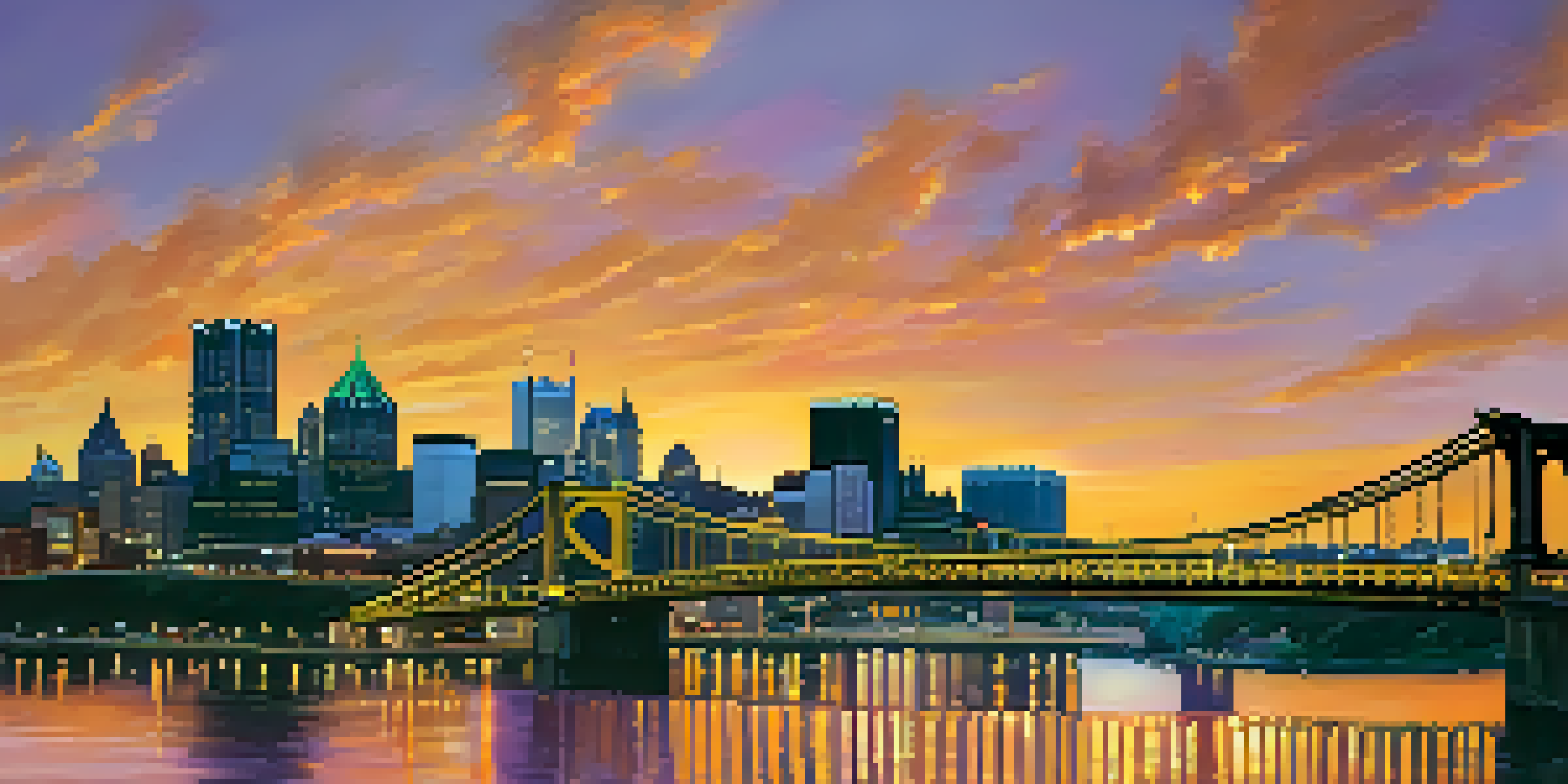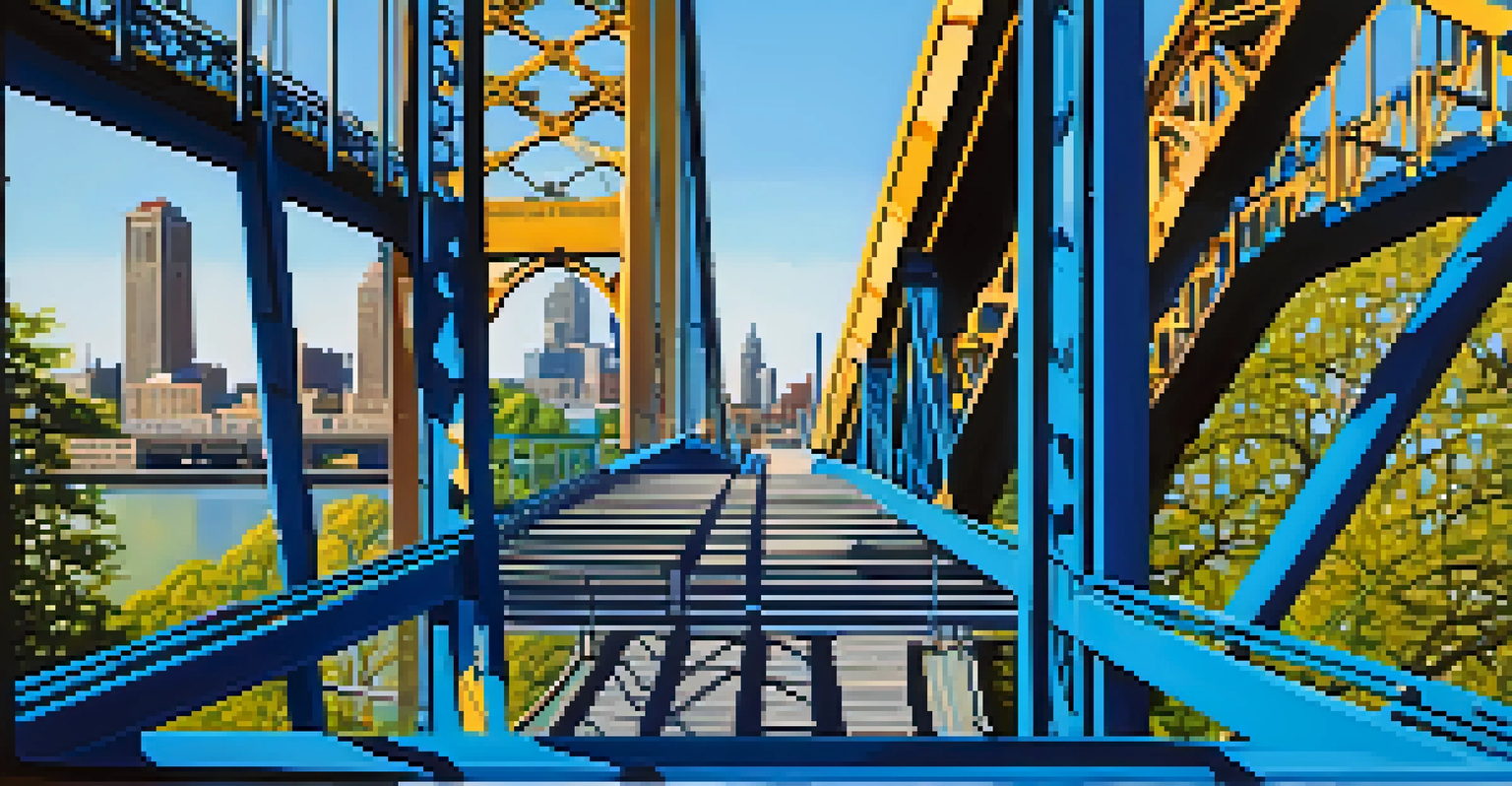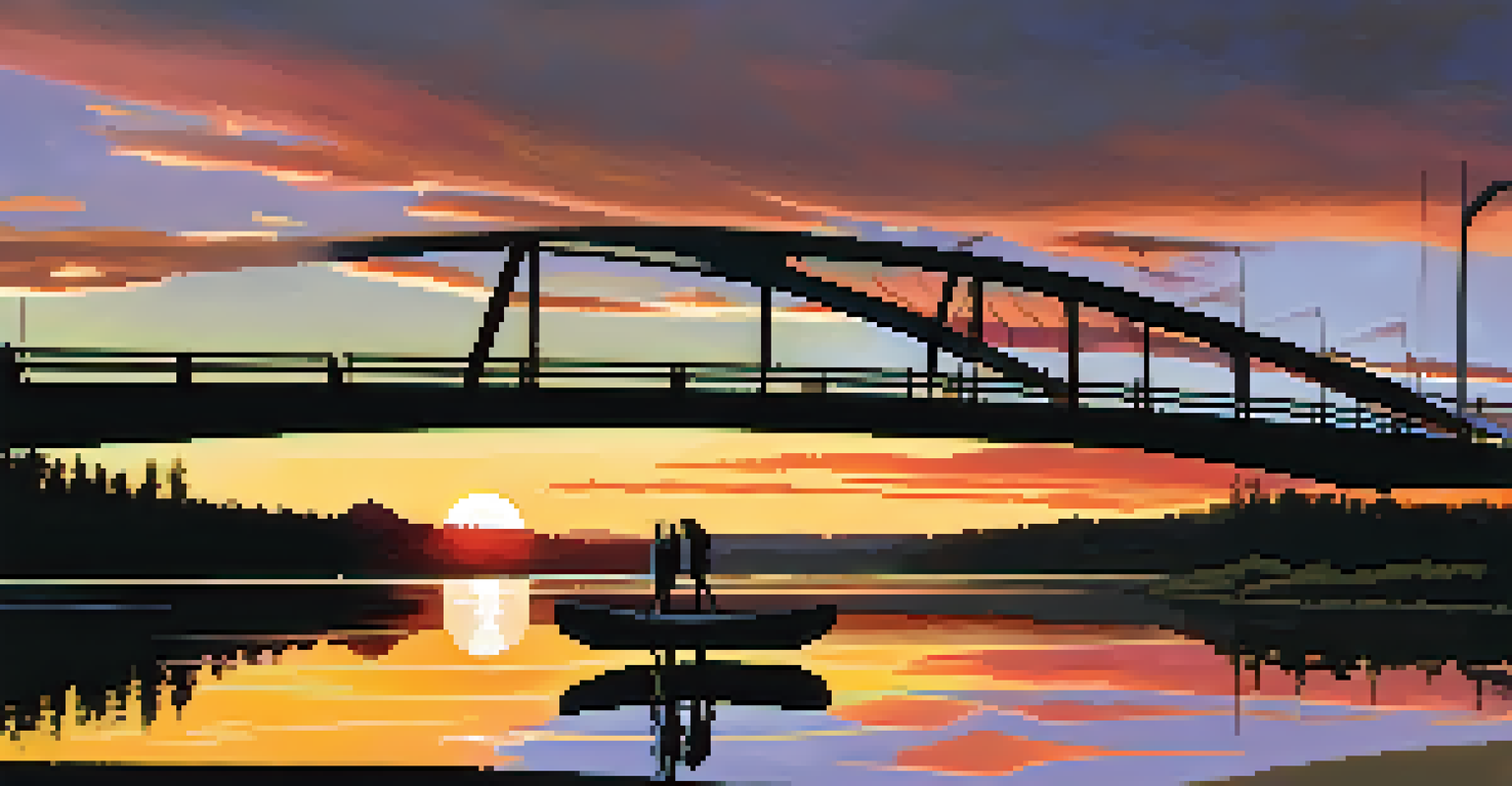Pittsburgh's Historic Bridges: Connecting the Past and Present

The Importance of Bridges in Pittsburgh's Development
Pittsburgh's bridges are more than just structures; they symbolize the city's growth and resilience. As a city built on the convergence of rivers, these crossings played a crucial role in facilitating trade and transportation. They helped shape the economy and culture, creating a bustling urban landscape during the Industrial Revolution.
Bridges are not only a means of crossing but a means of connection and understanding.
Each bridge tells a story, reflecting the architectural styles and engineering feats of its time. For instance, the Smithfield Street Bridge, built in 1883, showcases the beautiful wrought iron design that was popular during the late 19th century. This bridge not only connects neighborhoods but also serves as a reminder of the city's innovative spirit.
Today, these historic bridges continue to serve the community, allowing residents and visitors alike to traverse the rivers with ease. They are a vital link to Pittsburgh's past, offering insights into the city's evolution while enhancing its modern identity.
Iconic Structures: The Golden Triangle and Beyond
The Golden Triangle, where the Allegheny and Monongahela Rivers meet, is home to some of Pittsburgh's most iconic bridges. The Fort Pitt Bridge, with its striking yellow color, is perhaps the most recognizable, welcoming travelers into the city. Its unique design and breathtaking views of the skyline make it a beloved landmark.

Another significant structure is the Roberto Clemente Bridge, named after the legendary baseball player. This bright blue bridge not only connects the North Shore to downtown but also serves as a vibrant symbol of the city's sports culture. The annual lighting of the bridge during special events adds to its charm, making it a focal point for celebrations.
Bridges: Symbols of Pittsburgh's Growth
Pittsburgh's bridges symbolize the city's resilience and were crucial in shaping its economy and culture during the Industrial Revolution.
These iconic bridges do more than just connect land; they connect people with their history and each other. As Pittsburgh evolves, these structures remain cherished symbols of unity and pride.
Engineering Marvels: The Bridges' Architectural Styles
Pittsburgh's bridges showcase a variety of architectural styles, each reflecting the era in which it was built. From the simple pragmatism of the stone arch bridges to the intricate designs of more modern constructions, these structures are a testament to engineering innovation. The combination of beauty and functionality is evident in every design.
The bridge is a symbol of our ability to overcome obstacles and connect with one another.
The Three Sisters Bridges, for example, exemplify the graceful steel and cantilever designs of the early 20th century. Their elegant shapes and bold colors have made them a favorite among photographers and locals alike. These bridges not only serve a practical purpose but also enhance the aesthetic appeal of the city's landscape.
Understanding the architectural diversity of these bridges allows us to appreciate the craftsmanship involved. Each design choice tells a story of its time, contributing to Pittsburgh's rich tapestry of history and culture.
Preservation Efforts: Keeping History Alive
Preserving Pittsburgh's historic bridges is crucial for maintaining the city's heritage. Various organizations and local governments work tirelessly to ensure that these structures remain safe and functional while honoring their historical significance. These efforts include regular inspections, maintenance, and restoration projects.
Community involvement plays a significant role in these preservation efforts. Local residents often advocate for the protection of these bridges, emphasizing their cultural importance and the stories they carry. Initiatives like educational programs and public awareness campaigns help foster a sense of pride among Pittsburghers.
Cultural Icons of Connection
The city's iconic bridges not only connect neighborhoods but also serve as cultural symbols, featured in art and community events.
By actively engaging the community in preservation efforts, Pittsburgh ensures that future generations will continue to appreciate and learn from these historic bridges. They are not just crossing points; they are vital threads in the city's historical narrative.
Cultural Significance of Pittsburgh's Bridges
Beyond their practical functions, Pittsburgh's bridges hold deep cultural significance. They have been the backdrop for countless events, from sports celebrations to community gatherings, symbolizing unity and connection. The bridges are often featured in local art, literature, and photography, further embedding them in the city's cultural fabric.
The annual 'Bridges and Tunnels' art festival celebrates this connection, inspiring artists to create works that pay homage to these structures. This event not only highlights the aesthetic beauty of the bridges but also fosters a sense of community among participants and attendees. It serves as a reminder of how these structures inspire creativity and connection.
Understanding the cultural significance of the bridges enriches the experience of those who traverse them. They are not merely pathways but also milestones in the city's evolving narrative, embodying the spirit of Pittsburgh.
Historical Events Associated with Pittsburgh's Bridges
Pittsburgh's bridges have witnessed numerous historical events that have shaped the city's identity. For example, the Fort Duquesne Bridge was the site of significant military actions during the French and Indian War, marking a pivotal moment in American history. These events are woven into the fabric of the city's past, making the bridges iconic landmarks.
The bridges also played a role during the industrial boom, facilitating the movement of goods and people. Workers crossed these structures daily, contributing to the bustling economy and the rise of Pittsburgh as a steel capital. This historical role adds layers of meaning to the bridges, as they symbolize the hard work and determination of the city's residents.
Historic Events Shape Their Legacy
Pittsburgh's bridges have witnessed significant historical events, adding depth to their identity as living monuments of the city's past.
By acknowledging these historical events, we can better appreciate the bridges as more than just infrastructure. They are living monuments that connect us to our past, reminding us of the struggles and triumphs that have defined Pittsburgh.
Exploring the Bridges: A Visitor's Guide
For those eager to explore Pittsburgh's historic bridges, a walking tour offers an up-close experience. Many bridges are pedestrian-friendly, allowing visitors to enjoy stunning views of the city and rivers. Walking across the Roberto Clemente Bridge, for instance, provides a unique vantage point of the skyline and the bustling North Shore.
Local tour companies often offer guided tours that delve into the history and architecture of these structures. These tours not only highlight the bridges themselves but also explore the neighborhoods surrounding them, enriching the overall experience. Engaging with knowledgeable guides can deepen your understanding and appreciation of the city's history.

Whether you're a history buff, an architecture enthusiast, or simply looking for a scenic stroll, Pittsburgh's bridges provide a captivating experience. They invite visitors to connect with the city's past while enjoying its vibrant present.